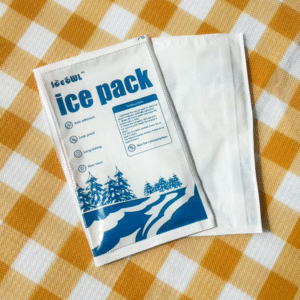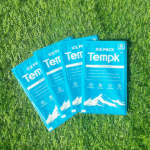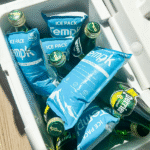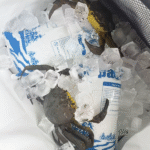Paquetes de hielo seco vs gel: ¿Cuál es la mejor solución de enfriamiento para el envío de la cadena de frío??
Choosing the right cooling solution for cold chain shipping is critical to ensuring product safety and efficiency. hielo seco y paquetes de gel are two common choices, each offering unique benefits. But which is better for your specific shipping needs? En este artículo, we’ll explore their differences, beneficios, and use cases to help you make an informed decision.

-
¿Cuáles son las diferencias clave entre el hielo seco y los paquetes de gel??
-
When should you choose dry ice for cold chain shipping?
-
What are the advantages of using gel packs over dry ice?
-
Which products are best suited for dry ice and gel packs?
What is the Difference Between Paquetes secos de hielo y gel?
hielo seco ¿Es la forma sólida de dióxido de carbono? (Co₂), sublimating directly from a solid to a gas at extremely low temperatures of -78.5°C (-109.3°F). This property makes it ideal for long-duration shipments that need ultra-low temperatures.
En contraste, paquetes de gel are filled with a non-toxic gel substance that freezes at temperatures just below 0°C (32°F). While effective for short-term cooling, gel packs are less suitable for maintaining deep-freezing temperatures.
Key Differences:
| Característica | Hielo seco | Paquetes de gel |
|---|---|---|
| Rango de temperatura | Por debajo de -78.5 ° C | Above 0°C |
| Duración del enfriamiento | Arriba a 72 horas | Arriba a 24 horas |
| Reutilizabilidad | De un solo uso | Reutilizable |
| Moisture Issues | Ninguno (sublimate al gas) | Potential moisture from melting |
When Should You Use Dry Ice?
Dry ice is perfect when deep-freezing is required. It maintains extremely low temperatures, haciéndolo ideal para biotecnología, productos farmaceuticos, y alimentos congelados.
Best Use Cases for Dry Ice:
-
Productos farmacéuticos & Biotecnología: Vacunas, muestras biológicas, and certain medical supplies require consistent sub-zero temperatures during transit.
-
Alimentos Congelados: Dry ice ensures frozen items like meat, mariscos, and ice cream maintain their required temperatures throughout transit.
Ejemplo: A pharmaceutical company shipping life-saving vaccines will rely on dry ice to maintain the necessary frozen state for up to 72 horas.
When Should You Choose Gel Packs?
Gel packs are better suited for moderate temperature-sensitive products. While they don’t offer freezing capabilities, they are great for keeping products cool during short to medium-duration shipments.
Best Use Cases for Gel Packs:
-
Productos frescos: Items like fruits and vegetables, which only need to remain cool and not frozen.
-
Productos cosméticos & Beauty Products: Many cosmetic products need to stay cool, Pero no congelado. Gel packs are ideal due to their versatility and ease of use.
Ejemplo: A skincare brand shipping beauty products will prefer gel packs, as they only need to stay cool, no congelado.
Paquetes de hielo seco vs gel: Which is More Cost-Effective?
Mientras hielo seco provides superior cooling, its cost and special handling requirements make it less affordable for certain shipments. Por otro lado, paquetes de gel are more economical and simpler to manage, especialmente para shorter shipments.
| Característica | Hielo seco | Paquetes de gel |
|---|---|---|
| Costo | Más alto | Más bajo |
| Manejo de complejidad | Alto (requires gloves, ventilación) | Bajo (safe for general handling) |
| Duración del enfriamiento | Largo (arriba a 72 horas) | Corto (arriba a 24 horas) |
How to Choose the Right Cooling Solution?
The choice between dry ice and gel packs depends on the following factors:
-
Requisitos de temperatura: If your shipment needs to stay below -18°C (0°F), dry ice is essential. For products that need to stay cool (no congelado), gel packs work best.
-
Duración de envío: Longer shipments require dry ice, while gel packs are sufficient for short-duration trips.
-
Presupuesto: For cost-effective solutions, especially when temperatures don’t need to dip below freezing, gel packs are ideal.
-
Consideraciones de seguridad: Gel packs are easier and safer to handle, making them suitable for consumer goods.
2025 Tendencias en el envío de la cadena de frío
Sostenibilidad is becoming a driving force in cold chain logistics. paquetes de gel, being reusable and more eco-friendly, are gaining popularity as businesses seek to minimize environmental impact. Además, avances en embalaje inteligente y temperature monitoring technologies will improve cold chain efficiency.
Tendencias para mirar:
-
Soluciones sostenibles: The rise of recyclable and biodegradable cooling methods is shaping the future of cold chain logistics.
-
Embalaje inteligente: RFID sensors and IoT-enabled temperature tracking will become more prevalent in ensuring the integrity of temperature-sensitive shipments.
-
Automation and AI: Automation in routing and AI-driven temperature management systems will further enhance logistics efficiency.
Preguntas frecuentes
Q1: How long does dry ice last compared to gel packs?
Dry ice can last up to 5 días, depending on the size and insulation. Gel packs typically last between 12 a 48 horas, depending on size and environmental conditions.
Q2: Can gel packs be reused multiple times?
Sí, gel packs are reusable and can be refrozen for multiple uses, making them an economical option.
Conclusión
Choosing the right cooling solution for your cold chain shipment depends on your specific needs. hielo seco is perfect for long-duration, ultra-cold shipments, mientras paquetes de gel provide a more economical and easier-to-handle option for shorter shipments. By assessing your temperature requirements, Duración de envío, and budget, you can select the best option for your goods.
Acerca de Tempk
En Templ, Nos especializamos en proporcionar tailored cold chain solutions, offering both hielo seco y paquetes de gel for different shipping needs. Our products ensure that your goods remain at the perfect temperature throughout the journey, minimizing risk and maximizing efficiency.
For expert advice on your cold chain shipping needs, don’t hesitate to contact us hoy!























